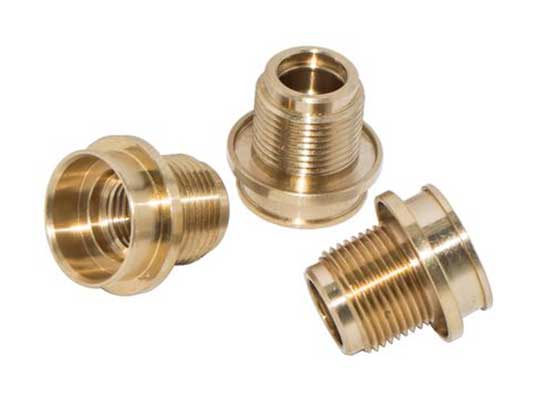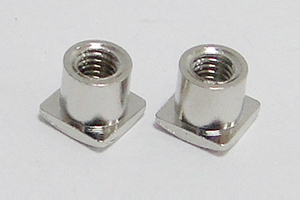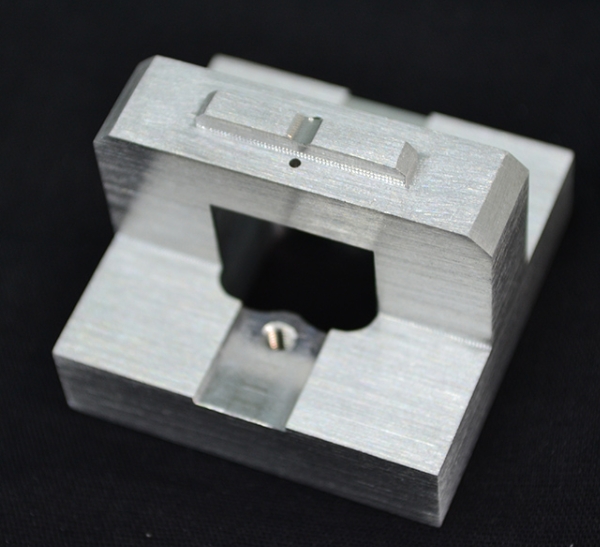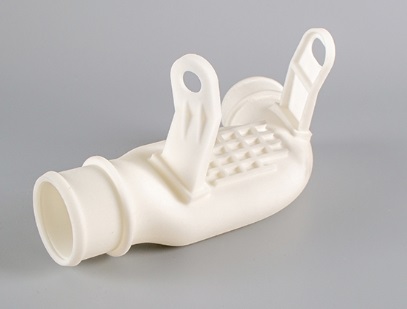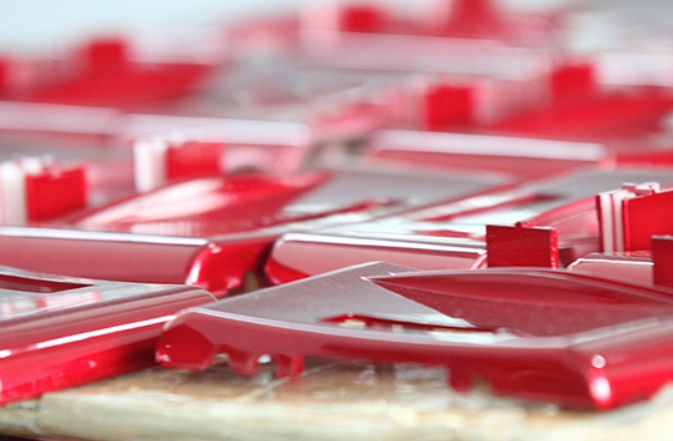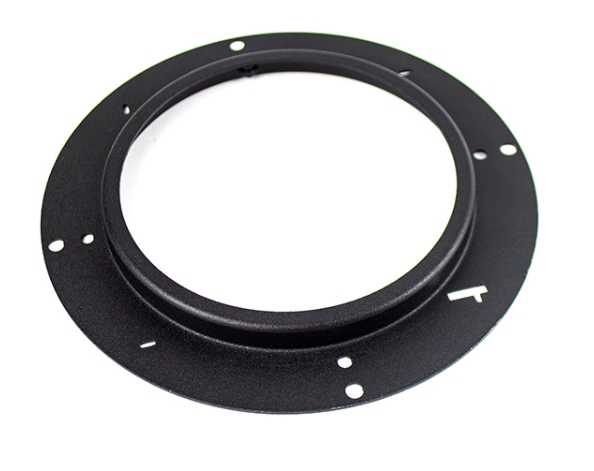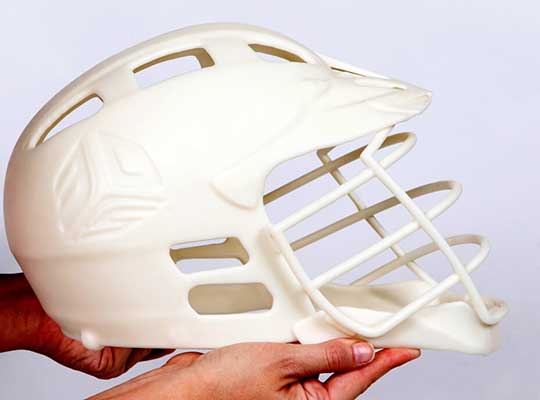In the world of subtractive manufacturing, CNC machining stands as a cornerstone technology, enabling precise and efficient production of parts across industries. Among the various CNC options available, 3-axis and 5-axis machines represent two primary categories that serve different manufacturing needs. While both utilize computer numerical control to automate cutting processes, their capabilities, aplikasi, and performance characteristics differ significantly. Understandingthe difference between 5-axis CNC machining & 3-axis machining is crucial for manufacturers, jurutera, and product developers seeking to optimize production, balance costs, and achieve desired part quality. This comprehensive guide explores these differences in detail, helping you make informed decisions for your specific manufacturing requirements.
Understanding Axis Configuration: The Fundamental Difference
At the core of the distinction between these two machining technologies lies their axis configuration, which directly impacts their movement capabilities and machining versatility.
3-Axis CNC Machining: Linear Motion Basics
3-axis CNC machining operates using three primary linear axes that define movement in a Cartesian coordinate system:
- X-axis: Horizontal movement along the machine’s length (left to right)
- Y-axis: Horizontal movement along the machine’s width (front to back)
- Z-axis: Vertical movement representing depth or height (up and down)
This configuration allows the cutting tool to move in three orthogonal directions relative to a stationary workpiece. The workpiece remains fixed in a vice or on a machine bed throughout the machining process, with all cutting operations performed by tool movement along these three axes. This simplicity makes 3-axis machines ideal for producing parts with straightforward geometries where all necessary cuts can be made from a single face or limited angles.
5-Axis CNC Machining: Expanded Motion Capabilities
5-axis CNC machining builds upon the 3-axis foundation by adding two rotational axes, significantly expanding movement possibilities:
- X, Y, Z axes: Same linear movements as in 3-axis machining
- A-axis: Rotation around the X-axis, enabling tilting of the workpiece or tool
- B-axis: Rotation around the Y-axis, providing additional angular positioning
This enhanced configuration allows the cutting tool to approach the workpiece from virtually any angle without repositioning the part. Some 5-axis machines rotate the workpiece via a rotary table, while others manipulate the tool head, but both approaches eliminate the need for multiple setups. This continuous access to multiple faces of the workpiece is what enables 5-axis machining to produce highly complex, multi-sided parts with superior precision.
Precision and Accuracy: Meeting Tolerance Requirements
Precision is a critical factor in manufacturing, and the choice between 3-axis and 5-axis machining often hinges on the tolerance requirements of the project.
3-Axis Machining’s Precision Capabilities
3-axis CNC machining delivers reliable precision for many applications:
- Typical tolerances range from ±0.001 to ±0.005 inches (0.025 ke 0.127 mm)
- Excellent accuracy for 2D and 2.5D parts with simple geometries
- Consistent results for flat surfaces, lubang, and basic contours
- Suitable for parts where tight tolerances are required on a single plane
Walau bagaimanapun, precision can be compromised when machining complex parts that require multiple setups. Each time the workpiece is repositioned, there’s potential for alignment errors, cumulative tolerance stack-up, and increased variation between parts. These limitations make 3-axis machining less ideal for components with critical dimensions across multiple faces.
5-Axis Machining’s Superior Precision
5-axis CNC machining offers enhanced precision, particularly for complex components:
- Achievable tolerances as tight as ±0.0005 inches (0.0127 mm) for critical features
- Superior accuracy for multi-sided parts due to single-setup machining
- Reduced error potential by eliminating multiple workpiece repositioning
- Consistent tool engagement angles, resulting in more uniform surface finishes
- Better maintenance of geometric relationships between complex features
The ability to machine all features in a single setup is especially valuable for aerospace, perubatan, and high-performance automotive components where dimensional accuracy across multiple axes is critical. 5-axis machines maintain precise toolpaths even when working with contoured surfaces, ensuring that each cut meets exact specifications.
Equipment Complexity and Cost: Investment Considerations
The technical differences between 3-axis and 5-axis machines are reflected in their complexity, purchase costs, and operating expenses.
3-Axis Machining Equipment: Simplicity and Affordability
3-axis CNC machines offer a more accessible entry point:
- Purchase price range: $25,000 ke $50,000 for standard industrial models
- Simpler mechanical design with fewer moving parts
- Lower initial investment makes them ideal for startups and small businesses
- Less complex maintenance requirements
- Lower operating costs due to simpler technology and less power consumption
- Easier to program using standard CAD/CAM software
These machines are widely available and come in various configurations, including mills, lathes, and machining centers, making them a versatile and cost-effective choice for many production environments. Their relative simplicity also means shorter setup times for straightforward parts.
5-Axis Machining Equipment: Advanced Technology Investment
5-axis CNC machines represent a more significant investment:
- Purchase price range: $80,000 to over $500,000 depending on size and capabilities
- Complex mechanical design with additional rotational components
- Higher precision components and advanced control systems
- Increased maintenance requirements due to more moving parts
- Higher energy consumption and operating costs
- Need for specialized CAD/CAM software and programming expertise
The higher cost is justified by their advanced capabilities, but it also creates a higher barrier to entry. 5-axis machines require more sophisticated calibration and maintenance to maintain their precision, contributing to higher ongoing operational expenses. Walau bagaimanapun, untuk bahagian yang kompleks, the efficiency gains and reduced labor costs can offset the higher initial investment.
Fleksibiliti material: Handling Diverse Substrates
Both 3-axis and 5-axis machines can work with a wide range of materials, but their effectiveness varies depending on material properties and part complexity.
3-Axis Machining’s Material Range
3-axis CNC machining handles many common manufacturing materials effectively:
- Logam: Aluminium, tembaga, keluli, Keluli tahan karat, and copper alloys
- Plastik: Abs, Nylon, akrilik, polikarbonat, and PEEK
- Composites: Fiberglass-reinforced plastics and basic composite materials
- Wood and foam: For prototyping and non-structural components
3-axis machines excel at machining these materials when producing parts with simple geometries. They can achieve good results with both soft and moderately hard materials, though machining very hard materials or complex features in tough substrates may be challenging due to limited tool access.
5-Axis Machining’s Material Capabilities
5-axis CNC machining offers similar material compatibility with additional advantages:
- All materials machinable by 3-axis machines, plus:
- High-strength alloys: Titanium, Inconel, and other superalloys
- Hardened steels: Hingga 50 HRC with appropriate tooling
- Exotic materials: Ceramics and composite materials requiring precise cutting
- Difficult-to-machine materials where consistent tool angles reduce wear
The ability to maintain optimal cutting angles across complex surfaces reduces tool wear and improves surface finish when working with challenging materials. This makes 5-axis machining particularly valuable for aerospace components made from high-temperature alloys and medical implants crafted from biocompatible materials.
Workholding and Setup: Efficiency in Production
The way workpieces are held and positioned during machining significantly impacts efficiency, especially for complex parts.
3-Axis Machining Workholding
3-axis CNC machining typically uses straightforward workholding methods:
- Fixed vices, clamps, and fixtures to secure workpieces
- Simple setups for single-face machining
- Need for multiple setups and repositioning for multi-sided parts
- Each repositioning requires recalibration and verification
- Increased labor time for complex parts requiring multiple operations
Contohnya, machining a cube-shaped part with features on all six faces would require at least three separate setups on a 3-axis machine. Each setup introduces potential errors and increases production time, making 3-axis machining less efficient for complex geometries.
5-Axis Machining Workholding
5-axis CNC machining offers more efficient workholding solutions:
- Rotary tables and multi-axis fixtures that position parts dynamically
- Single setup for complete part machining in most cases
- Reduced need for complex fixturing due to tool accessibility
- Automatic indexing between machining operations
- Consistent datums throughout the entire machining process
A complex part that would require multiple setups on a 3-axis machine can often be completed in a single setup on a 5-axis machine. This not only saves time but also eliminates alignment errors between setups, improving overall part accuracy and consistency.
Production Efficiency and Lead Times
The number of axes directly impacts how quickly parts can be produced, especially for complex components.
3-Axis Machining Efficiency
3-axis CNC machining provides good efficiency for simple parts:
- Fast cycle times for straightforward geometries
- Lower programming time for basic part designs
- Effective for high-volume production of simple components
- Reduced efficiency for complex parts requiring multiple setups
- Increased labor costs for parts needing manual repositioning
Contohnya, a flat panel with holes and slots can be produced quickly on a 3-axis machine with minimal setup. Walau bagaimanapun, a turbine blade or medical implant would require numerous setups, long production times, and increased labor costs when produced on a 3-axis machine.
5-Axis Machining Efficiency
5-axis CNC machining offers superior efficiency for complex parts:
- Significantly reduced production time for multi-sided components
- Elimination of multiple setup times and manual intervention
- Continuous machining capabilities without operator involvement
- Reduced handling time between operations
- Higher spindle utilization due to fewer interruptions
While 5-axis machines may have slightly longer cycle times per feature compared to 3-axis machines for simple parts, their ability to complete complex parts in a single setup results in overall faster production. Contohnya, a complex aerospace component that might take 10 hours on a 3-axis machine (including setup time) can often be completed in 4-6 hours on a 5-axis machine.
Application Suitability: Matching Technology to Requirements
Different part geometries and industry needs are better served by either 3-axis or 5-axis machining.
Ideal Applications for 3-Axis Machining
3-axis CNC machining excels in these scenarios:
- Simple 2D and 2.5D parts: Plates, kurungan, and flat components
- Low-complexity housings with features on a single face
- Prototaip of basic designs
- Pengeluaran volum tinggi of simple components
- Woodworking and plastic fabrication
- Parts with straightforward geometries without complex contours
Common industry applications include electronics enclosures, simple automotive brackets, plastic parts, and general mechanical components where multi-sided precision isn’t required. 3-axis machining is also widely used in education and small workshops due to its lower cost and simpler operation.
Ideal Applications for 5-Axis Machining
5-axis CNC machining is the preferred choice for:
- Complex 3D geometries: Turbine blades, impellers, and curved components
- Multi-sided parts requiring features on multiple faces
- Komponen Aeroangkasa: Engine parts, structural elements, and brackets
- Medical implants: Hip replacements, knee components, and surgical tools
- Mold and die making: Complex cavities and cores with intricate details
- Parts with Potong, angles, and contoured surfaces
The ability to machine complex shapes in a single setup makes 5-axis technology indispensable for industries where part performance is critical. Its precision and versatility also make it valuable for prototyping complex designs where accuracy is essential for testing and validation.
3-Axis vs. 5-Axis CNC Machining: A Comparative Overview
| Faktor | 3-Axis CNC Machining | 5-Axis CNC Machining |
|---|---|---|
| Axis Configuration | X, Y, Z linear axes | X, Y, Z linear axes plus A, B rotational axes |
| Typical Tolerances | ±0.001 to ±0.005 inches | ±0.0005 to ±0.002 inches |
| Equipment Cost | $25,000 – $50,000 | $80,000 – $500,000+ |
| Setup Requirements | Multiple setups for complex parts | Single setup for most complex parts |
| Programming Complexity | Lower, standard CAD/CAM skills | Higher, requires specialized training |
| Kemasan permukaan | Baik (16-63 Ra) | Cemerlang (8-32 Ra) |
| Material Handling | Effective for simple materials | Superior for exotic and hard materials |
| Production Volume Suitability | High-volume simple parts | Low-to-medium volume complex parts |
| Labor Requirements | Higher for complex parts | Lower due to automation |
| Maintenance Needs | Lower | Higher due to complex components |
| Lead Time for Complex Parts | Lebih lama (multiple setups) | Shorter (single setup) |
5-Axis Machining Variations: Understanding the Options
Within 5-axis machining, there are different configurations that offer varying capabilities:
Indexed 5-Axis Machining
This configuration allows the machine to position the workpiece at specific angles between cutting operations but doesn’t enable simultaneous movement of all axes during cutting. It offers a middle ground between 3-axis and full 5-axis capabilities, providing improved access to part features without the full complexity of continuous 5-axis movement. Indexed 5-axis is often more affordable than continuous 5-axis and suitable for parts requiring multi-angle machining but not complex contours.
Continuous 5-Axis Machining
This advanced configuration enables simultaneous movement of all five axes during cutting operations. The tool maintains optimal contact with the workpiece surface as it follows complex contours, resulting in superior surface finishes and reduced cycle times. Continuous 5-axis machining is essential for producing highly complex parts like turbine blades and impellers where the tool must maintain a constant orientation relative to curved surfaces.
Mill-Turn 5-Axis Centers
These hybrid machines combine CNC milling capabilities with turning operations, allowing for complete part production in a single setup. They’re particularly valuable for cylindrical parts with complex features, such as camshafts and hydraulic components, that require both rotational and multi-axis machining operations.
Yigu Technology’s Perspective on 3-Axis vs. 5-Axis CNC Machining
Di Yigu Technology, we view 3-axis and 5-axis CNC machining as complementary technologies. 3-axis excels in cost-effective production of simple parts and prototypes, ideal for startups and high-volume basic components. 5-axis machining delivers unmatched precision for complex geometries in aerospace, perubatan, and advanced manufacturing. We recommend selecting based on part complexity, tolerance needs, and production volume to balance performance and cost efficiency.
Soalan yang sering ditanya (Soalan Lazim)
- When should I choose 3-axis over 5-axis CNC machining?
Choose 3-axis machining for simple, single-faced parts, low-complexity prototypes, and high-volume production of basic components. It offers lower costs and faster setup times for straightforward geometries where multi-angle precision isn’t required. - What types of parts require 5-axis CNC machining?
5-axis machining is necessary for complex parts with multi-sided features, contoured surfaces, Potong, or tight tolerances across multiple axes. Examples include aerospace components, medical implants, turbine blades, and complex molds requiring precise 3D geometries. - Does 5-axis machining always produce better quality parts than 3-axis?
Tidak semestinya. For simple parts, 3-axis machining can produce high-quality results at lower cost. 5-axis machining provides superior quality specifically for complex parts requiring multi-angle precision, consistent surface finishes across contoured surfaces, and tight geometric relationships between features.
